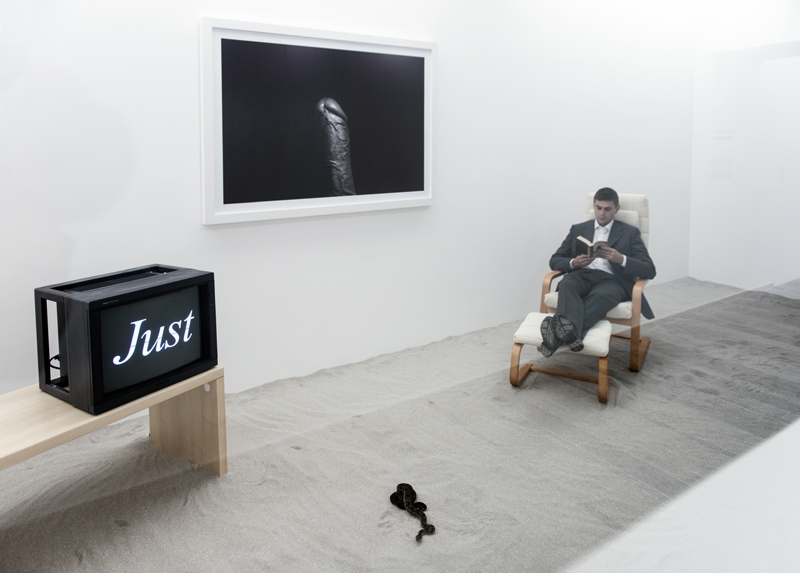Yan Xing’s career in art began with DADDY Project (2011), a performance that took place in a small gallery located in suburban Beijing. There he stood, facing a brick wall, giving an autobiographical speech about his fatherless childhood while a camera recorded him from behind for a simultaneous broadcast on a nearby monitor. The one-hour narrative touched many people, but I have never really appreciated too much psychological interpretation or emotional resonance in art criticism. However, to me the work is interesting because it makes me laugh, and it offers some clues to the direction of the young artist’s future works.
After DADDY Project, Yan created some more works using a performative strategy and an autobiographical narrative, while, as an addicted social-media user, he was continuously posting accounts of his semitrue, semifictional romance on Weibo (the Chinese Twitter), which made him what Gilbert & George might call a ‘living sculpture’. The Sex Comedy (2013) and The Sweet Movie (2013), works created for the finalists’ exhibition of the Future Generation Art Prize at the Pinchuk Art Centre, Kiev (and in the collateral event at Venice), showed that his use of a performative strategy (described by writer Raphael Gygax as ‘tableaux vivants’) had finally matured. He has since come to be seen as ‘the hottest emerging gay artist in China’, but even then he was no longer satisfied with the digestion and exposure of his family history and personal life. As a matter of fact, Yan’s artistic practice has always really been the product of a talented artist’s history of studying.
Edward Hopper, Richard Hamilton, Robert Mapplethorpe, artist and friend Duan Jianyu, the propaganda film Lenin in 1918 (1939), film directors Pier Paolo Pasolini and Catherine Breillat – Yan Xing selects all that fascinates him as his ‘materials’. Each of his works is based on the decomposition, analysis and recomposition of one of those materials. By interpreting and evolving existing art elements into his personal and current context, he has developed a methodology and created his art. His 2013 solo exhibition Recent Works was an ensemble of that kind of practice. The show consisted of five pieces, but it could be seen as a complete work that showcased Yan Xing’s methodology and the characters of his art.
But Yan Xing’s ‘great future’ is not only built on that. Compared with other Chinese artists his age, he is much quicker to realise the dangers of being labelled and to understand how the game runs in the artworld – for example, how to play a Chinese emerging artist who works in Europe and lives in the US and not be in the shadow of the mighty Ai Weiwei, the source of so many preconceived ideas about what it is to be a Chinese artist. All of Yan Xing’s works to date have been flirtatious flowers growing in the soil of existing art materials. But his area of study has expanded from his desk to a broader field. Since 2014 he has been working on The Caucasus Project (working title), a long-term plan based on a survey of the Caucasus Mountains in which he brings an ambition to introduce a literary style – a combination of journal, travelogue and collected stories – to his work. I am looking forward to its planned completion in 2016, and before that, his new solo at Galerie Urs Meile, Beijing, this autumn.
Yan Xing lives between Beijing and Los Angeles. His videos, performances and installations have been shown by Galerie Urs Meile in Lucerne, and the Chinese Arts Centre, Manchester, and in 2012 at the 7th Shenzhen Sculpture Biennale. In 2015 he has solo exhibitions at Galerie Urs Meile in Beijing and the Stedelijk Museum, Amsterdam. Selected by Aimee Lin, editor, ArtReview Asia.
Read all of our 2015 FutureGreats profiles
This article was first published in the March 2015 issue.
